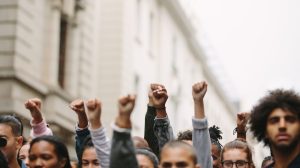Following repeated reports of American women experiencing a “female recession” as a result of the global pandemic, there’s finally a bit of good news to report on the female-employment job front. According to newly released government data, women accounted for up to 75% of all individuals entering the workforce throughout March 2021.
Mariel Padilla of nonprofit newsroom The 19th has reported that “nearly 500,000 women returned to the workforce in March, compared to about 162,000 men, according to new data released by the Bureau of Labor Statistics.”
Padilla added that “women-dominated industries, including leisure and hospitality, are beginning to bounce back just as students who have been learning remotely for months return to in-person classes.”
The bounce-back appears to be the result of several factors, including reduced state restrictions on business, increased vaccine distribution, as well as the $1,400 stimulus payments that were recently distributed to a majority of Americans.
In a press conference following the release of the new data, President Joe Biden called the job report “promising” especially following our previous “year of devastation.”
“The first two months of our administration has seen more new jobs created than the first two months in any administration in history,” he said, “We created 900,000 again. But [there are] 8.4 million jobs fewer today than [March 2020].”
“Too many women have been forced out of the workforce,” Biden said. “Unemployment among people of color remains far too high … Today’s report shows that the country can — what it can do when we act together to fight a virus, to give working people the help they need. But we still have a long way to go, but I know that we are going to get there and we’re going to get there together.”
The Bureau of Labor Statistics reported that 916,000 individuals returned to the workforce overall in March 2021, including 262,000 people who went from unemployed to employed, and 654,000 who entered the labor force altogether.
According to the Bureau’s data, white men and white women are averaging 5.2 and 5.0% unemployment respectively — edging closer to the pre-pandemic rate of about 3% for both groups.
But according to Padilla, unemployment figures are still problematic for many other groups, including women of color.
“For Black women, the unemployment rate is 8.7% and 10.2% for Black men — a dramatic increase from 5.3% and 7.6% respectively in March 2020,” she reported. “For Latinas, the unemployment rate is 5.9% and 6.2% for Latinos. For Asian women, it’s 5.7% and 6.1% for Asian men.”
After examining the new data, Michael Madowitz, an economist at the Center for American Progress, released a statement saying that even with the impressive rebound of the past few months, the country’s employment rate likely won’t return to pre-pandemic levels until at least 2022.
“The employment rate for women has partially recovered from its April 2020 low, but only enough for women’s employment to increase from late-1970s levels to late-1980s levels,” he said. “Many mothers of young children are facing burnout and an unemployment crisis. They may now face decades of increased wage discrimination over resume gaps and missed promotions during this impossible year.”
Padilla agreed, reporting the sobering news that even as we make gains on unemployment levels, “with about 4.1 million people who have been out of work for more than six months, there are now more people experiencing long-term unemployment, both in and out of the labor market, than at virtually any other time in U.S. history.”
Related: For more recent diversity and inclusion news, click here.


















